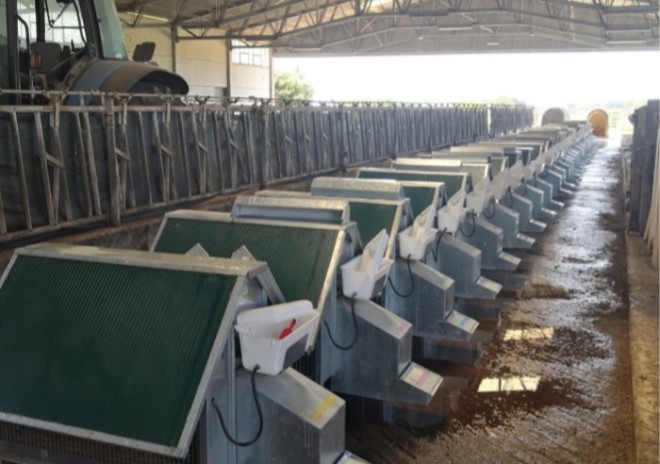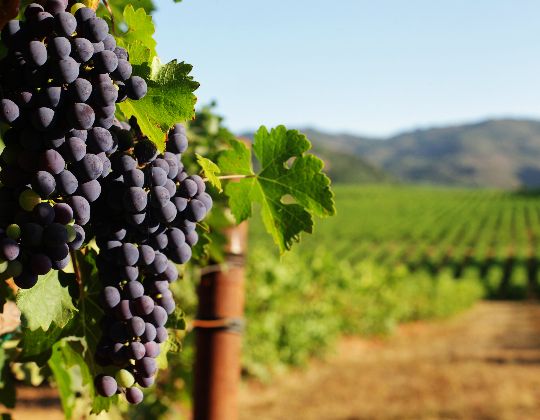Trial of feeding hens with 15% and 30% inclusions of live soldier fly larvae
Inclusion of live soldier fly larvae in the diet of laying hens, aimed at assessing its impact on rearing performance and overall animal health, as well as monitoring its effect on egg quality and physicochemical composition.
Partner: Arianna Cattaneo1,2, Marco Meneguz1, Stefano Mercandino1, Francesca Grosso1, Sihem Dabbou2, Erminia Sezzi3, Raniero Lorenzetti3, Alessio Cupidi4, Claudia Cupidi4, Angela Trocino5
1BEF Biosystems
2University of Trento
3Zooprophylactic Institute Latium and Tuscany
4 Fattoria Cupidi
5 University of Padua
1. Period: from June to September 2022
2. Partners and roles: Fattoria Cupidi, Zooprophylactic Institute Latium and Tuscany and University of Trento

Figure 1. The arks used for housing hens.

Figure 2. Merchandise evaluations of egg quality.
Evaluation of the following parameters:
1. efficiency of animal breeding;
2. animal health and welfare;
3. Chemical and physical analysis of eggs (Figure 9);
4. productive performance.
Results:
The main results are given below; two publications in journals with peer review will follow.
Among the main parameters taken into consideration are those related to growth performance, first and foremost the parameter of efficiency in converting the food supplied.
F.C.R. (feed conversion ratio)= Given food weight (g)/ Eggs produced weight (g)
FCR was calculated in four different periods as shown in Table 2.
M1 | M2 | M3 | M4 | |
CONTROL | 2,60 | 2,81 | 3,72 | 4,05 |
15% BSFL | 2,18 | 2,49 | 2,70 | 3,39 |
30% BSFL | 2,38 | 2,83 | 2,92 | 3,30 |
Table 2. Comparison of FCR between control and treatments, evaluated in four different periods; BSFL= black soldier fly larvae,soldier fly larvae.
Although statistical analysis is still ongoing, it can be seen immediately that hens that were fed with live grubs integrated at 15 percent on the standard diet ration saw a reduction in FCR compared to those fed only on the standard diet. The reduction in FCR would indicate a reduction in feed consumption in relation to egg production. For each kg of eggs produced, only 2.18 kg of 15% BSFL diet would be needed, compared with 2.60 kg of control diet (Table 2).
Egg quality parameters
Modalities of evaluation:
Multivariate repeated-measures Anova; in case of P<0.05, data evaluated with Tukey Post-hoc between treatments. Below are the parameters with associated p-values; for the values of each parameter, see Table 3. Values in yellow are those that showed significant differences between treatments.
1. Egg mass: P< 0,05
2. Yolk mass: P> 0,05
3. Shell mass: P>0,05
4. Albumen mass: P<0,05
5. Shell thickness: P>0,05
6. Longitudinal diameter: P<0,05
7. Equatorial diameter: P>0,05
8. Shell color
L: P<0,05
A P<0,05
B: P<0,05
9. Yolk color
L(white/black): P>0,05
A (green/red): P<0,05
B(blue/yellow): P>0.05
10. Dense albumen height: P<0,05
11. Haugh Index: P>0,05
12. Yolk height: P>0,05
13. Yolk diameter: P>0,05
14. Height-to-diameter ratio: P>0,05
15. Air chamber height: P>0,05
Within the physical parameters analyzed on fresh eggs, significant differences (P<0.05) were found between groups (C, 15, 30% BSFL) regarding egg mass: the groups that were fed with live larvae supplement (15 and 30 percent) provided significantly higher data than the control group (56.67 and 56.66 vs. 54.64 grams, respectively, with P<0.05), but similar to each other (P>0.05). When analyzing albumen mass and longitudinal diameter, significant differences were recorded between the control and 15% groups (P<0.05).
The highest value of albumen mass is recorded for the 30% BSFL treatment and is 37.15 grams, followed by the 15% BSFL treatment of 36.16 grams.
The largest longitudinal egg diameter is found in the 30% BSFL group (54.62 mm), followed by the 15% (54.54 mm) and control (53.64 mm); however, this parameter does not influence the commercial classification of eggs. Studying the height of dense albumen, the highest value was obtained with the 15% treatment. It would be interesting to assess whether this index leads to positive differences by analyzing the technological aspects of egg white. Yolk color showed no significant differences between the groups, except for the "a" parameter (red/green), which was similar considering the two groups at 15 and 30 percent, but significantly different from the control group (P<0.05). The most intense red values were recorded at the 15 percent treatment (-1.87), followed then by the control (-2.05) and 30 percent (-2.14) groups. A redder yolk is sought after by the egg-selling market; therefore, increasing with a natural product this parameter turns out to be very attractive.
Therefore, it is possible to conclude that supplementation of live larvae in the diet has no adverse effect on egg quality. In particular, an amount equal to 15 percent of the expected dailly feed intake is able to ensure excellent physicochemical qualities of eggs, which is also of interest to the final consumer.
Person of interest: Erminia Sezzi , executive Zooprophylactic Institute of Latium and Tuscany
https://www.izslt.it/wp-content/uploads/traspDirFiles/SEZZI_ERMINIA_CV.pdf
Angela Trocino, ordinary professor :https://elearning.unipd.it/biologia/blocks/course_managers/manager.php?id=903&b=3577
Raniero Lorenzetti, executive biologist Zooprophylactic Institute
https://www.izslt.it/wp-content/uploads/traspDirFiles/LORENZETTI_RANIERO_CV.pdf
Siehm Dabbou, associate professor at the University of Trento
https://webapps.unitn.it/du/it/Persona/PER0222577/Didattica
Alessio Cupidi, breeder at Fattoria Cupidi
Treatm. | Egg mass (g) | Yolk mass (g) | Shell mass (g) | Albumen mass (g) | Shell thickness (mm) | Longitudinal diam. (mm) | Equatorial diam. (mm) | Shell Color - L | Shell Color - a | Shell Color - b | Yolk color - L | Yolk color - a | Yolk color - b |
Control | 54,64a | 13,35 | 5,51 | 34,57a | 0,39 | 53,64a | 42,27 | 57,54 | 18,78 | 29,65 | 56,09 | -2,05a | 35,83 |
15% BSF | 56,67b | 13,68 | 5,76 | 36,16b | 0,40 | 54,54b | 42,60 | 56,24 | 19,36 | 30,04 | 55,53 | -1,87b | 35,71 |
30% BSF | 56,66bc | 14,04 | 5,64 | 37,15ab | 0,39 | 54,62ab | 42,61 | 58,37 | 18,23 | 29,19 | 55,48 | -2,14cb | 33,96 |
Treatm. | Dense albumen height | Haugh index | Yolk height (mm) | Yolk diameter (mm) | Height-to-diameter ratio | Air chamber height (mm) |
Control | 9,68a | 98,78 | 17,90 | 32,48 | 0,50 | 1,67 |
15% BSF | 10,07b | 99,40 | 18,42 | 32,79 | 0,50 | 1,67 |
30% BSF | 9,73ab | 98,33 | 18,37 | 33,08 | 0,49 | 1,68 |
Table 3. Quality parameters of the eggs analyzed. Average values by experimental group; respectively control, 15% and 30% supplementation with live larvae on daily feed intake.
Different letters correspond to significantly different values (P<0.05).
Issues:
The diet used as a control was very rich, protein-wise, and because the hens in the arks had no way to move, liver fatigue was recorded and noted in all treatments.
Conclusions:
Live larvae turn out to be a useful food that can go into a formulation not as a supplement but as a replacement for the lipid and protein fraction of laying hens' feed.
Newsletter
We have so much for you to learn about.
Sign up for our newsletter




